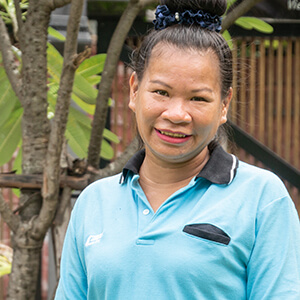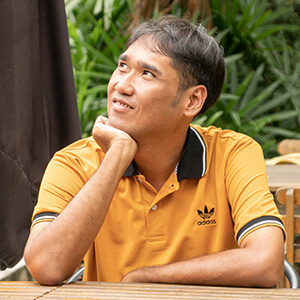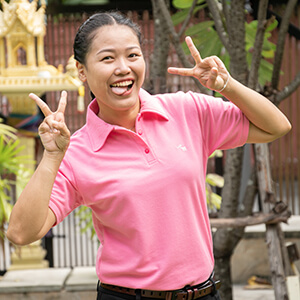This 17 minute podcast explores the essential guidelines for dressing appropriately when visiting Thai temples. We compiled comprehensive research on traditional dress codes, cultural significance, and practical tips for travelers and locals alike. Using NotebookLM, we transformed our collected information into an engaging audio discussion covering what to wear, what to avoid, and why these dress codes matter in Thai Buddhist culture. Whether you’re planning your first temple visit or want to deepen your understanding of Thai customs, this episode provides clear, respectful guidance for honoring these sacred spaces through appropriate attire.
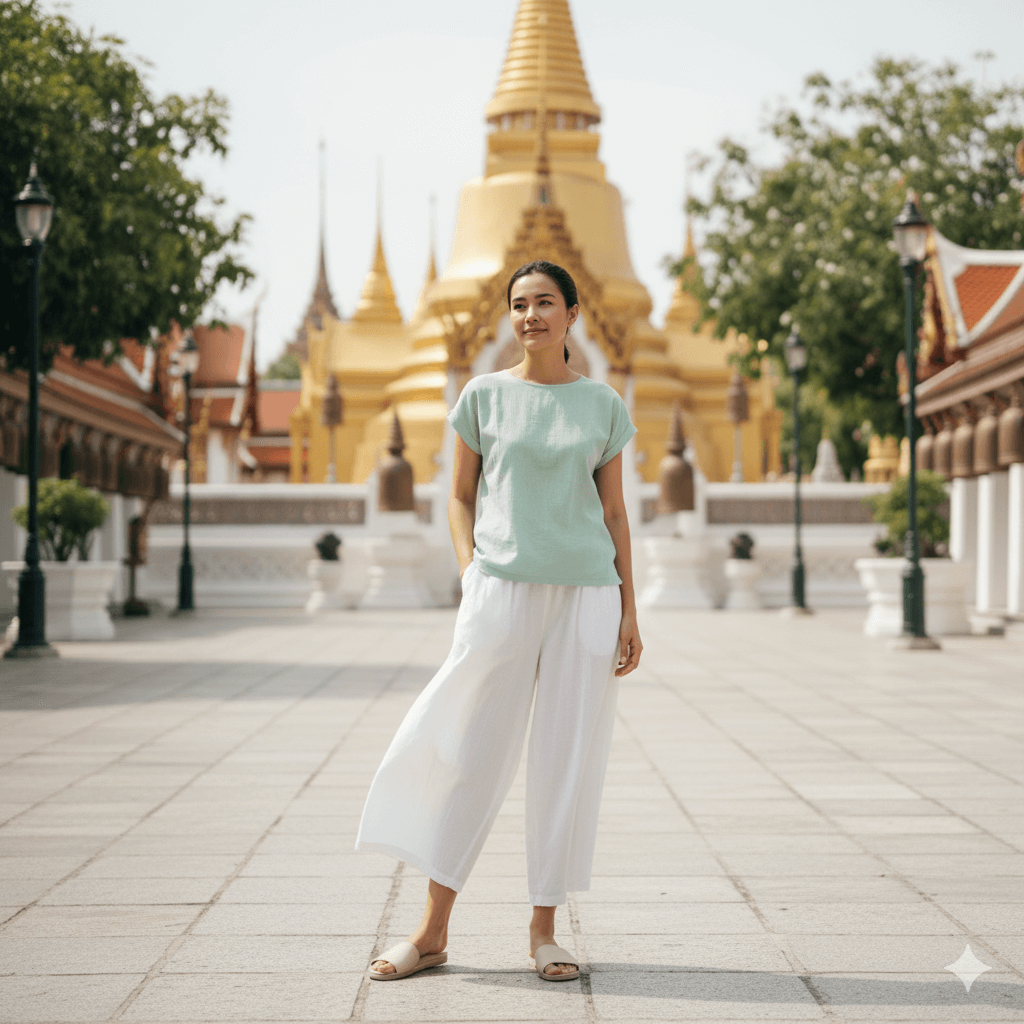
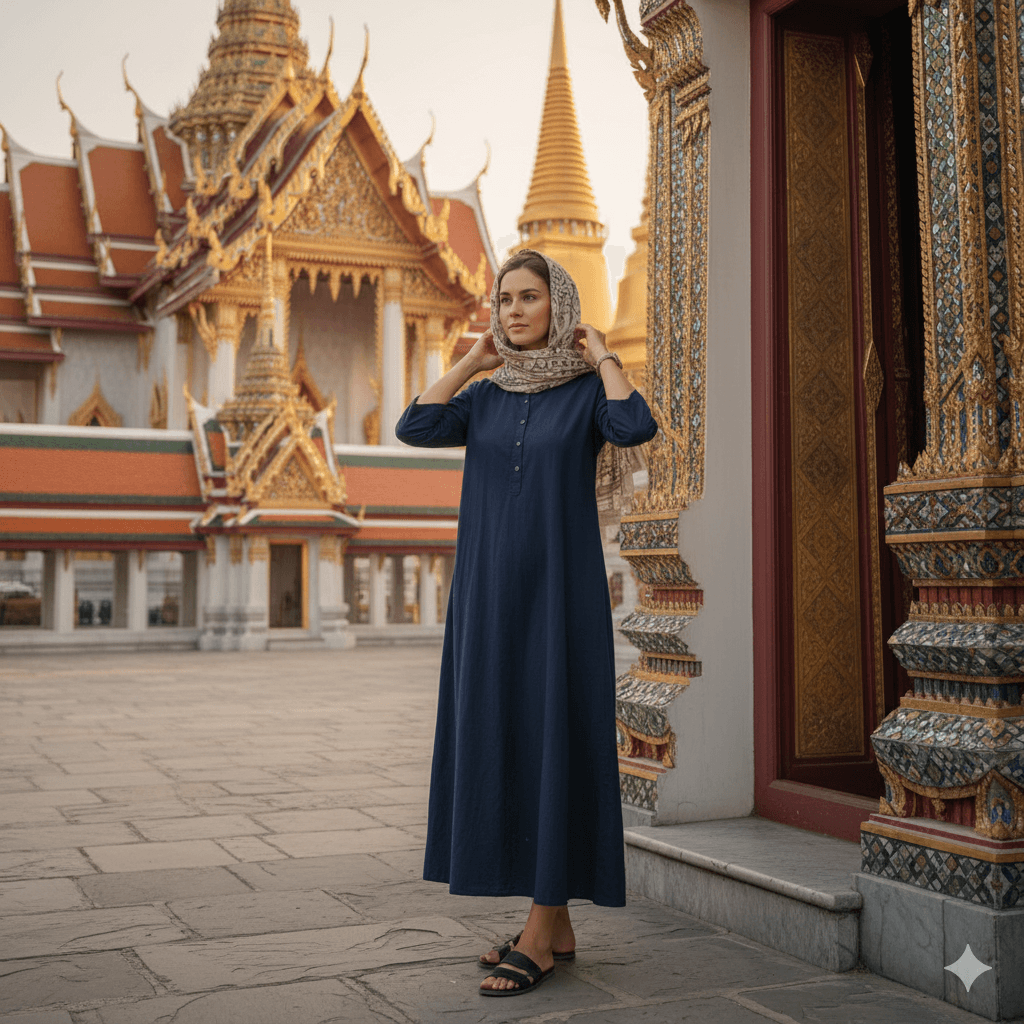
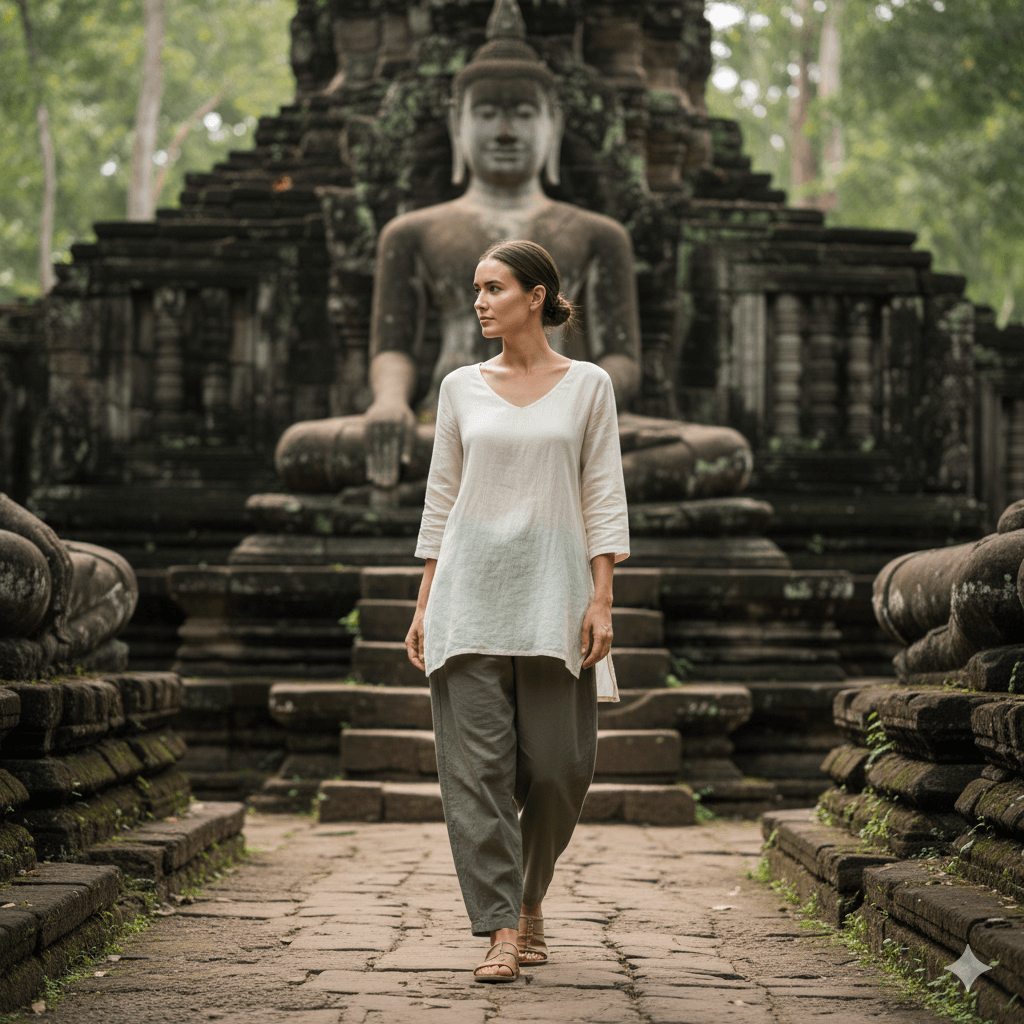
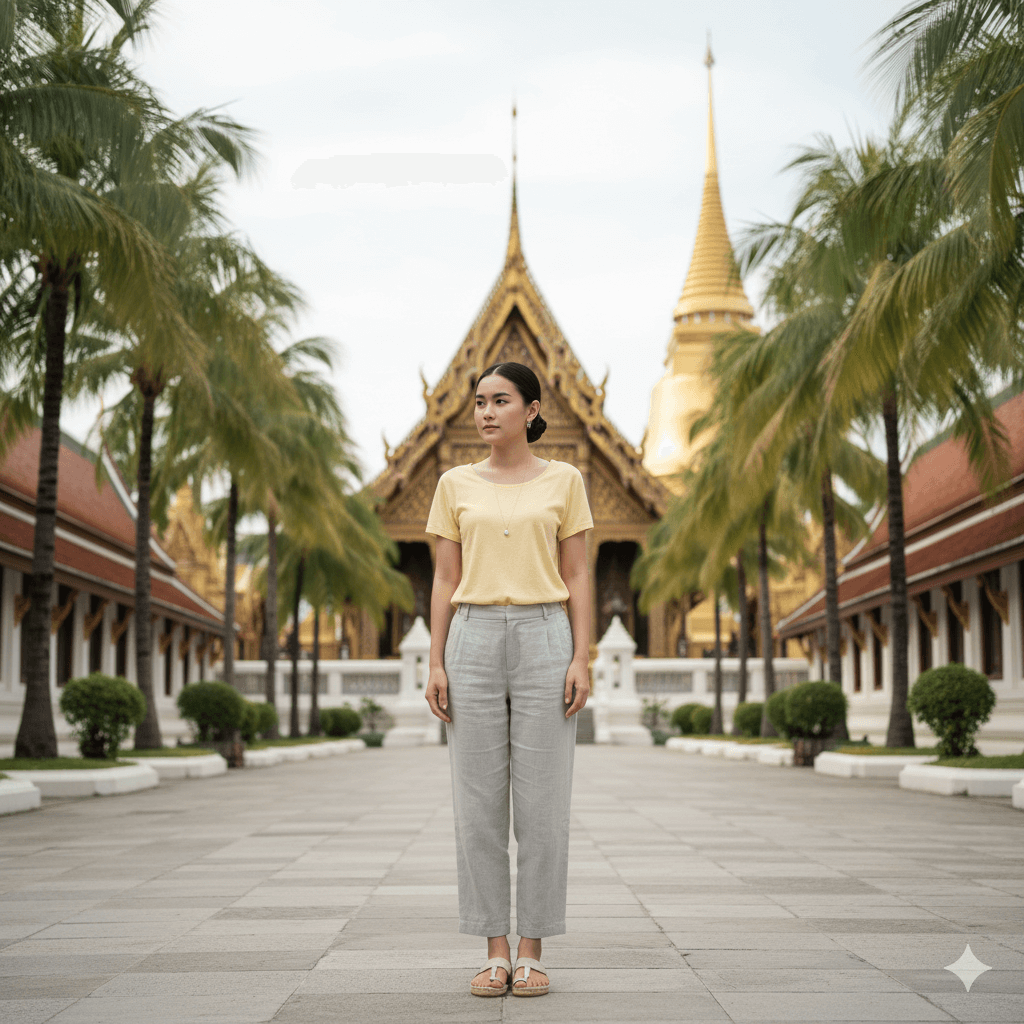
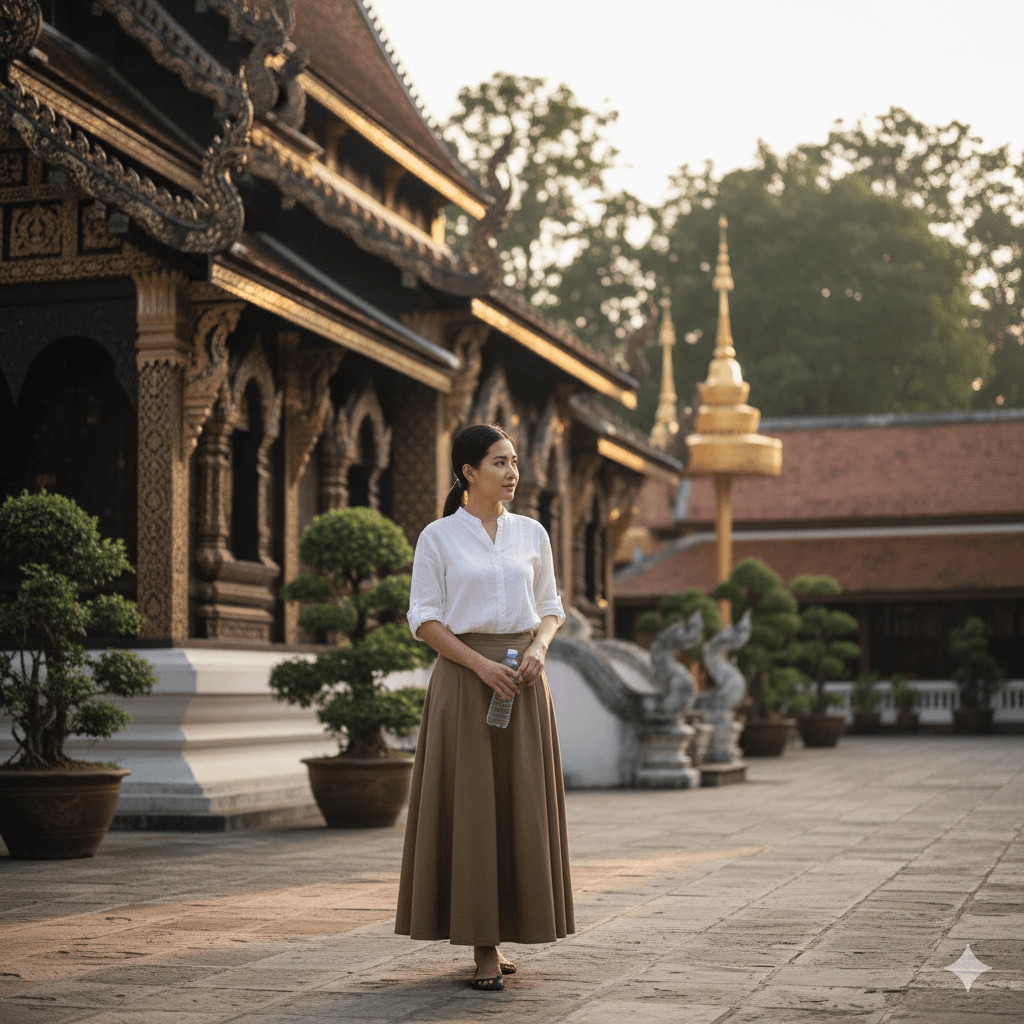
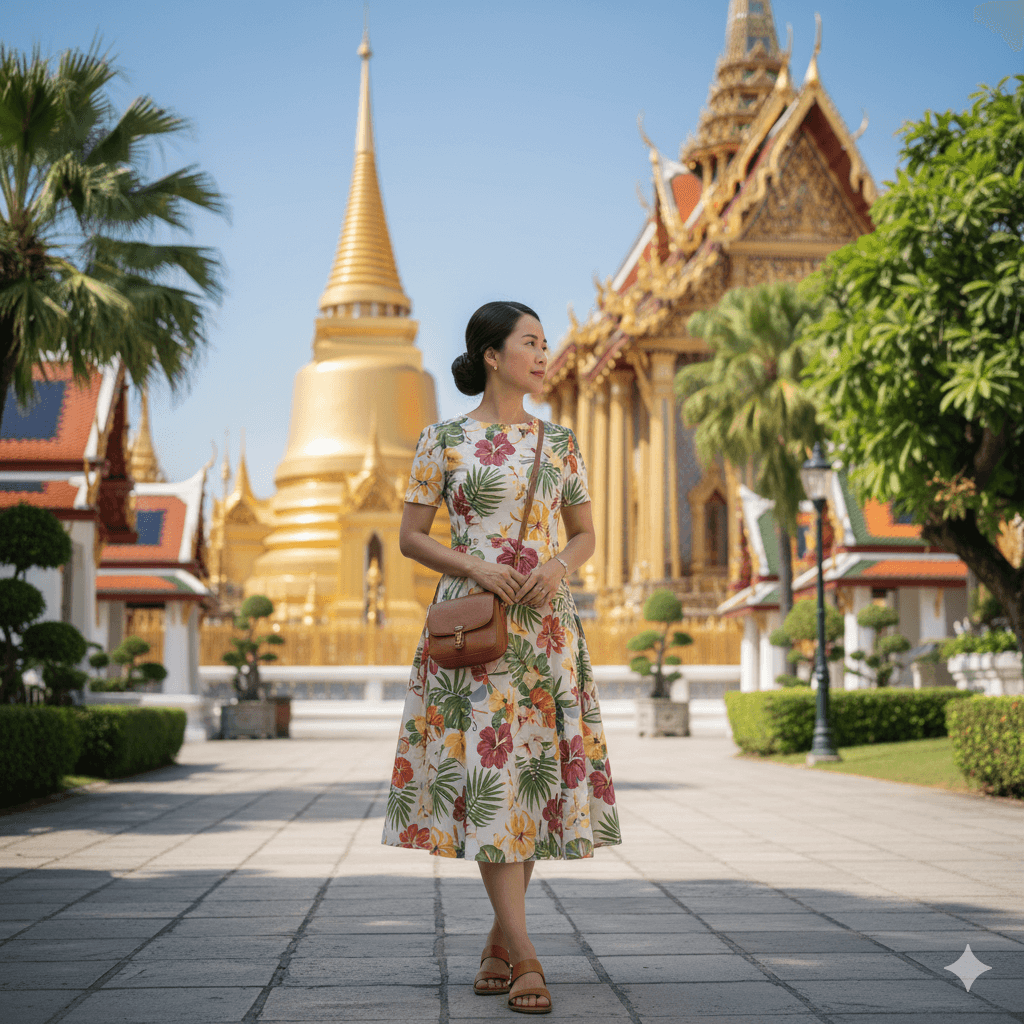
Based on our 17 minute podcast exploring the essential guidelines for visiting Thailand’s sacred spaces
Thailand: A Nation of Sacred Spaces
Thailand is home to over 40,000 temples (called “wats” in Thai), reflecting the country’s deep spiritual heritage where 95% of the population practices Theravada Buddhism. These temples aren’t just historical sites, they’re active, living places of worship that welcome visitors while expecting respectful behavior and appropriate dress.
Most temples are free or very affordable to enter, and a small donation is always appreciated to help with upkeep and support the monks’ charitable work. The best time to visit is during the cool season (November to February), though April’s Songkran festival offers a vibrant cultural experience despite the heat.
The Golden Rule: Cover Shoulders and Knees
The fundamental dress code for all Thai temples is simple but non-negotiable: cover your shoulders and cover your knees. This applies to both men and women and shows respect for the Buddhist faith and Thai cultural traditions. Violating this rule may result in denied entry or being asked to rent a sarong or robe.
What to Wear
For Everyone:
- Long pants or skirts that cover the knees completely
- Shirts or blouses that cover shoulders (no tank tops or spaghetti straps)
- Lightweight, breathable fabrics like cotton, linen, or rayon
- Light-colored clothing to reflect heat
- Slip on shoes (sandals or loafers) for easy removal
Avoid:
- Shorts above the knee
- Sleeveless tops or crop tops
- Tight fitting clothes like leggings or yoga pants
- Ripped or torn clothing
- See through fabrics
- Heavy materials like thick denim
Temple Hierarchy: Different Rules for Different Sites
Strictest Level: The Grand Palace & Wat Phra Kaew
The Grand Palace and Temple of the Emerald Buddha in Bangkok maintain the highest dress standards in Thailand:
- Men: Long pants to the ankles (no capris), shirts with sleeves
- Women: Long pants to ankles or long skirts/dresses covering knees, shoulders fully covered
- Important: Scarves cannot be used to cover bare shoulders here
- No exceptions: Tight fitting pants like leggings are prohibited
Medium Strictness: Major Royal Temples
Temples like Wat Pho and Wat Arun maintain important standards but with slightly more flexibility:
- Shoulders and knees must still be covered
- Men may wear knee covering shorts
- Women can wear knee covering skirts
- Scarves may be acceptable for covering shoulders
General Temples
Most neighborhood temples and those on islands maintain the basic rules but tend to be more relaxed in enforcement while still expecting respectful dress.
Ancient Sites
Even historical ruins like those in Ayutthaya and Sukhothai require modest dress, as many remain active sacred sites. At Wat Mahathat in Ayutthaya, visitors should keep their heads lower than the famous Buddha head in the tree roots and avoid turning their backs to it.
Essential Temple Etiquette
Inside Temples
- Remove shoes before entering buildings
- Remove hats and sunglasses in sacred areas
- Speak quietly and silence phones
- Avoid flash photography near worshippers or artifacts
- Ask permission before photographing people
- Don’t touch statues or lean on structures
- Stay out of restricted areas marked by signs or ropes
Interacting with Monks
- Greet respectfully with a slight nod or traditional “wai” gesture
- Women must never touch monks
- Don’t hand items directly to monks, place them down for pickup
- Show reverence through respectful distance and behavior
Body Language Matters
- Never point feet toward Buddha statues, monks, or other people
- Avoid turning your back directly on main Buddha images when leaving
- When sitting, tuck feet underneath or point them to the side
- Back away a few steps before turning around when exiting main halls
Broader Thai Cultural Guidelines
Universal Respect
- Show absolute respect for the Thai monarchy (criticism is illegal)
- Never touch anyone’s head, including children
- Use your right hand for giving and receiving items
- Return a “wai” greeting when offered
- Maintain composure, never lose your temper in public
Social Interactions
- Keep public affection minimal (hand holding is generally acceptable)
- Lower your head when passing between people or blocking someone’s view
- Smile frequently, it’s deeply valued in Thai culture, being the Land of Smiles
- Handle money and objects respectfully, never tossing them
Practical Preparation Tips
Climate Considerations
Thailand’s tropical climate demands smart fabric choices. Lightweight, breathable materials in light colors will keep you comfortable while meeting dress requirements. Avoid layering strategies like wearing tank tops under scarves, single appropriate layers work better in the heat.
Backup Plans
Don’t panic if you arrive inappropriately dressed. Most major tourist temples offer sarongs or pants for rent (30-50 Thai baht), and nearby stalls typically sell suitable clothing affordably (100-250 baht). Tour guides can help you arrange the proper attire.
Health and Safety
Stay hydrated, wear sunscreen, and choose shoes with good grip, especially during rainy season. Comfortable walking shoes are essential for exploring temple grounds, but remember you’ll be removing them frequently.
Beyond Clothing: The Deeper Experience
Understanding these guidelines transforms temple visits from simple sightseeing into meaningful cultural exchanges. When you dress appropriately and follow local customs, you’re not just avoiding embarrassment, you’re showing genuine respect for Thailand’s spiritual heritage and opening yourself to richer, more authentic experiences.
Remember that these temples, even ancient ruins, remain living sacred spaces where people come to worship, meditate, and find peace. Your respectful presence contributes to maintaining the sanctity of these remarkable places for future generations.
For the complete discussion including detailed examples and cultural insights, listen to our full 17 minute podcast above.



